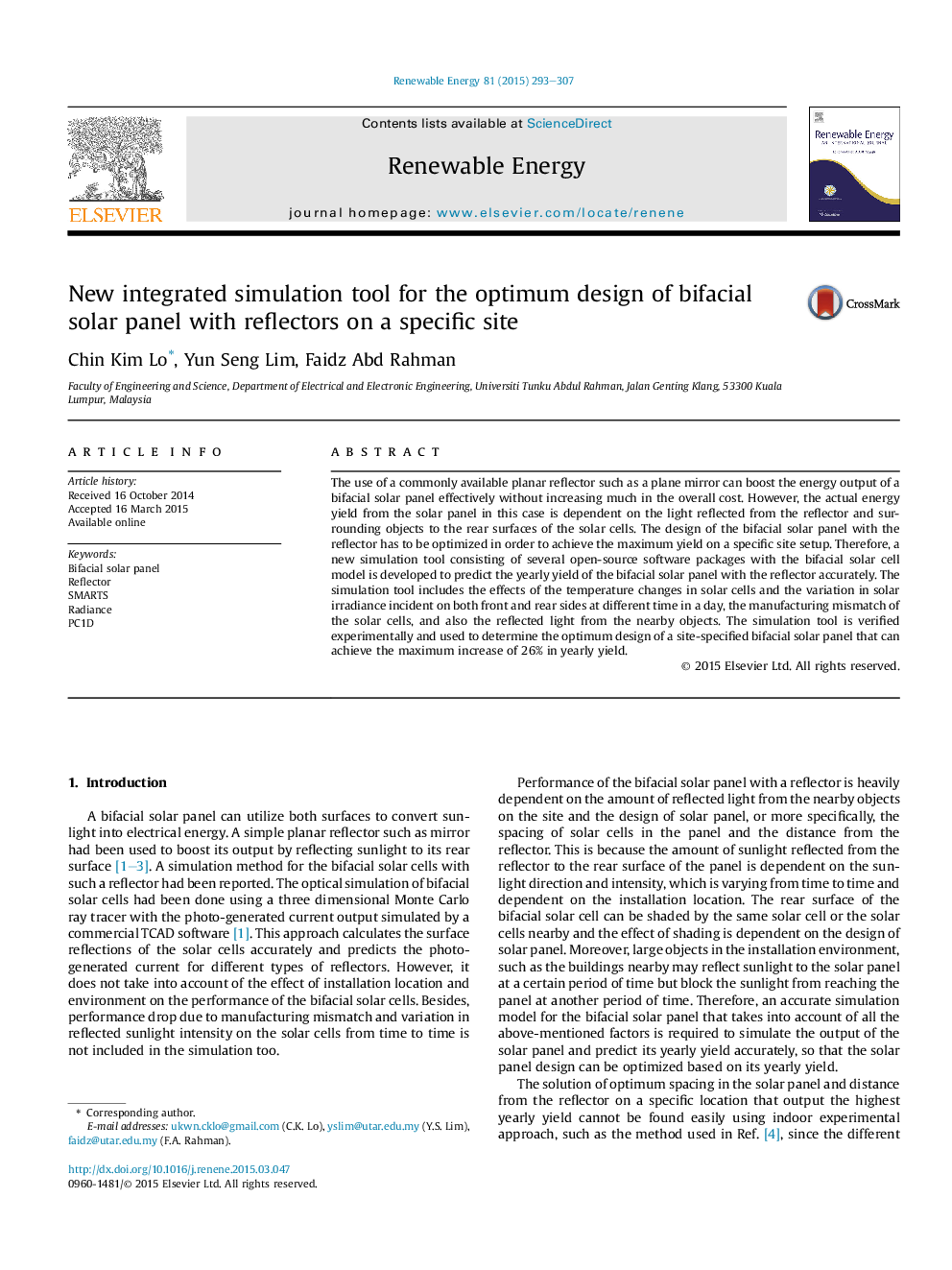| Article ID | Journal | Published Year | Pages | File Type |
|---|---|---|---|---|
| 6767007 | Renewable Energy | 2015 | 15 Pages |
Abstract
The use of a commonly available planar reflector such as a plane mirror can boost the energy output of a bifacial solar panel effectively without increasing much in the overall cost. However, the actual energy yield from the solar panel in this case is dependent on the light reflected from the reflector and surrounding objects to the rear surfaces of the solar cells. The design of the bifacial solar panel with the reflector has to be optimized in order to achieve the maximum yield on a specific site setup. Therefore, a new simulation tool consisting of several open-source software packages with the bifacial solar cell model is developed to predict the yearly yield of the bifacial solar panel with the reflector accurately. The simulation tool includes the effects of the temperature changes in solar cells and the variation in solar irradiance incident on both front and rear sides at different time in a day, the manufacturing mismatch of the solar cells, and also the reflected light from the nearby objects. The simulation tool is verified experimentally and used to determine the optimum design of a site-specified bifacial solar panel that can achieve the maximum increase of 26% in yearly yield.
Related Topics
Physical Sciences and Engineering
Energy
Renewable Energy, Sustainability and the Environment
Authors
Chin Kim Lo, Yun Seng Lim, Faidz Abd Rahman,
